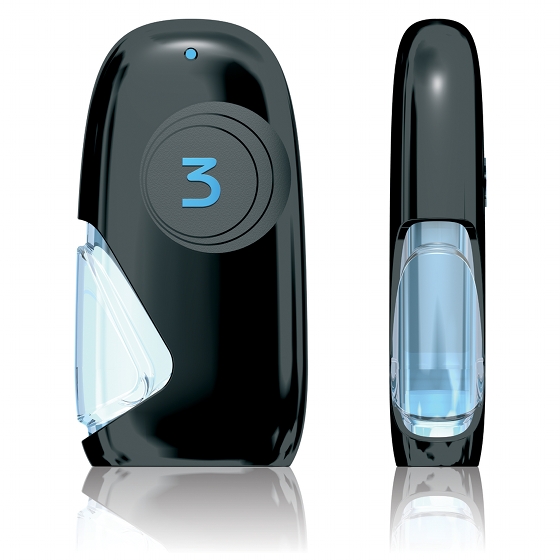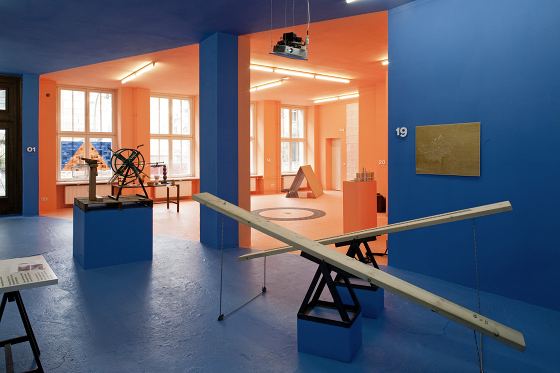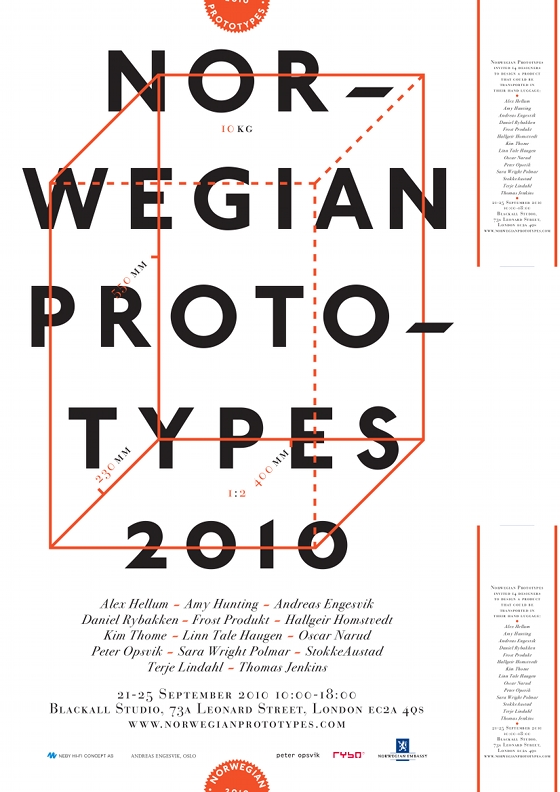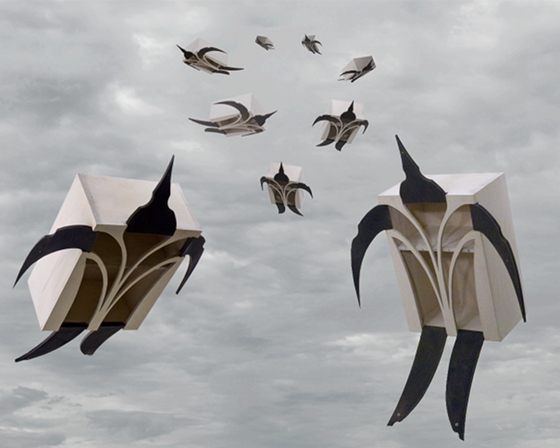DIY Design: the art and value of creative self-promotion
Texto por Alexander Horne
Oslo, Noruega
07.10.10
As the academic wheels of design creak into a new term, thoughts of the most recent graduates striving to avoid a professional-scrap-heap scenario fall to the back of the mind as the hunt for the latest bright young creatives begins again. But, with an increase in applicants and graduates in design subjects (around 60,000 this year in the UK) aiming to fit through what seems to be a shrinking net of professional opportunity in an already competitive field, how do designers react and evolve to ride out financial and employment turbulence?
Many argue that the emergence of online culture and the infinite amount of domain it gives to free speech and opinion has led to a demise in the status of critics and the quality of critique. Whether or not the phenomena of blogs and online communication has diminished the limits of fame for some critics, it certainly has opened the door for many more to express their views on a level playing field. In the music industry, such online critique and information flow can create overnight success through viral video clips and audacious rumours, (sometimes intentionally set loose by record labels or the musicians themselves) creating hype for upcoming releases. While independent musicians attempt increasingly innovative ways to break into an already swelteringly overcrowded industry, the plight of designers' equivalent battle is rarely reported.
French designer Ito Morabito (aka Ora-ïto) used to design products speculatively for big brands in order catch their attention. Now he designs actual products for those brands. 'Three' was a perfume bottle he created for Adidas in 2003.

French designer Ito Morabito (aka Ora-ïto) used to design products speculatively for big brands in order catch their attention. Now he designs actual products for those brands. 'Three' was a perfume bottle he created for Adidas in 2003.
×To the general public, design appears to sit awkwardly between academic acceptance and raw creative hedonism. A difficult place to be for the independent proponents who strive to secure paying clients to survive, if they are not one of the lucky few to be kept afloat by funding initiatives. A challenging prospect for each new set of graduates and aspiring young designers but, thankfully, one which produces some innovative responses that more than compete with the creative wit of their music contemporaries. In fact, long before sites such as Youtube become a daily hit for casual net surfers and around the time when Myspace was just on the cusp of popularity, one young French designer was already making a name for himself with very little academic backing and through his own self-created brand image. Ito Morabito, better known as Ora-ïto, was just 21 when he started to design 'fake' products for big name brands. Ito took a premature exit from design school as an opportunity to build his own name by creating the illusion that he was designing actual products for global brands like Nike, Heineken or Louis Vuitton. As Morabito states: 'you need to be able to be recognized and positioned in this huge market'. Now the actual art director for some of the aforementioned brands and many more, Ora Ito's response to academic rejection was practical success.
Oslo-based design agency Anti have caused a stir with their black-metal-inspired jeans label Anti Sweden, not least by installing an upside-down Swedish flag in front of their store

Oslo-based design agency Anti have caused a stir with their black-metal-inspired jeans label Anti Sweden, not least by installing an upside-down Swedish flag in front of their store
×If Ora-ïto's defiance in rejecting the image of academic dropout was dream-like in terms of visionary stamina, there are other young designers for whom reactionary action has a more immediate necessity. Some young architects who suffered recession-enforced redundancy last year made headlines for taking their quest for work to the streets with super enlarged billboard sized CVs and golf sale style wearable ad stands. Needless to they landed jobs shortly after the press got a hold of their stories; whether or not it was anything to do with their stunts is another question. It is not only individual designers using public acts to strategically garner some income-related attention though. In a country rarely recognized for expressive acts of rebellion, Oslo-based design studio Anti have set the tone for a series of provocative acts of communication with their Anti Sweden brand of black metal denim. By name and image alone, they have received much global attention from fashion press to national news. Sending a Norwegian black metal band reared to rip noise through the speakers, as opposed to a keynote presenter, while a backdrop of gruesome press shots from the latest collection flickered by was likely a first at the usually moderate Pecha Kucha Oslo network events. Apparently it is the Swedish flag draped upside down from the Anti studio/shop that is the thorniest activity for onlookers to swallow though.
London studio Oscar & Ewan's interpretation of the evolving 'Art of Conversation' exhibition brief; photo by Nikolai Wolff

London studio Oscar & Ewan's interpretation of the evolving 'Art of Conversation' exhibition brief; photo by Nikolai Wolff
×From the strategic marketing of an emerging fashion label to an innovative cry for work by individual designers - the right communication can be priceless in the quest for survival and success. For penniless design graduates and creative entrepreneurs who do not have the belly or desire to cause public disruption in the name of 'making it' though, the internet has been a rich source for effective communication at a low cost. Through free online tools such as blogs, Twitter or Skype designers can build networks and communities to strengthen their own image and client pick-up potential. One innovative use of the latter mentioned free chat program was seen earlier this year with the Art of Conversation exhibition that pitted 10 emerging designers from London with 10 from Berlin. In the spirit of 'chinese whispers', each design studio received a brief from a studio in the other city and then passed on a new brief back to a new studio in the other city loosely based upon the one they received. As each studio worked on their brief, the interpretation and vision of how the project will go changed with each exchange. London to Berlin, Berlin to London and back again – each exchange is broadcast and recorded via Skype.
Poster design for the 2010 edition of Norwegian Prototypes by Molly Kyhl. The exhibition was curated by Norwegian designers Amy Hunting and Kim Thome

Poster design for the 2010 edition of Norwegian Prototypes by Molly Kyhl. The exhibition was curated by Norwegian designers Amy Hunting and Kim Thome
×Empowerment from a free web application in the case of The Art of Conversation aided the designers in their ability to maintain communication and mould the look of their own exhibition. Few could deny that of the official design festivals held in Milan and London, something in a similar spirit could probably only be found in Tortona and the city's East End respectively. For one much heralded designer though, that is not enough. Possibly most famed for his punk attitude toward the traditional grid system of magazine design, best seen in 'The Face' during the 90s, graphic design guru Neville Brody has made clear what he thinks of London Design Festival with his inception of the Anti Design Festival which coincidentally runs at the same time. 'What about the ideas that got left on a table because they're deemed to be uncommercial? What about the value in those?' proclaims Brody when questioned about ADF. Perhaps all of the London Design Festival is not about flashy sellable products and finding the next new thing, though.
Thomas Jenkins' innovative shelf system from the 'Norwegian Prototypes' exhibition, 2010. The show's brief was to design something that would fit in a suitcase

Thomas Jenkins' innovative shelf system from the 'Norwegian Prototypes' exhibition, 2010. The show's brief was to design something that would fit in a suitcase
×One year on from a debut show that usurped their fellow Nordic exhibitors in terms of critical acclaim, 'Norwegian Prototypes' prepared itself for a second stint at the London Design Festival. An exhibition showcasing Norwegian design and curated by Norwegian designers, (as the name suggests) is more focused on ideas and conceptualization than gleaming finished products that are ready for sale. 100% Norway may get the financial backing of Norway's design and architecture centre (DogA) and the allure of a well-known curator (Wallpaper design editor, Henrietta Thompson) but, it is the designer-led 'Norwegian Prototypes’, which is seemingly attracting more attention and desire from other designers to be involved. Of those involved in the exhibition this year there is a fascinating time line reference of Norwegian design - from the ergonomic master Peter Opsvik to a former member of Norway Says, the first Norwegian studio to make a name for themselves and their country at the Milan furniture fair almost ten years ago. A refreshing nod to the past when many other curators and critics are more intent on unearthing more newfound 'talents', 'Norwegian Prototypes' shows designers that they don't have to wait around to be picked by haughty institutions or picky funding initiatives.
Norwegian design legend Peter Opsvik's charming animal-istic shelves, 2010
DIY exhibitions, self-made promo stunts or cunning strategic ploys – whether or not these are cards that all aspiring designers must play to keep afloat or the quality will rise naturally to the top, co-founder of the London Design festival Ben Evans spells out a hard but promising message for them. 'The recession has brought a bit of a cleanout; I'm strongly of the view that what we've lost is the mediocre. But the good has to work a bit harder.'






